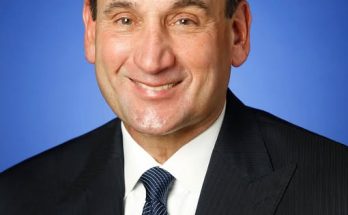In the world of professional basketball, trades and team decisions often reshape the course of history. Some trades become legendary, etched into the annals of the sport as pivotal moments that led to dynasties or franchises’ rebirths. Others, however, are shrouded in ‘what-ifs’—missed opportunities that could have changed the landscape of the NBA forever. One such episode involves a team that nearly acquired Steph Curry in a trade, only to stumble on a crucial front: the medical evaluation. This failure led to the team dismissing key medical personnel in a dramatic shakeup, highlighting how one misstep in health assessment can ripple across a franchise’s future.
The story begins in the late 2000s when Curry was still an unproven young guard, fresh from Davidson College, and entering the NBA draft with immense potential but also some uncertainty about his durability and health. While Curry ultimately was drafted by the Golden State Warriors, rumors and reports later emerged suggesting that another NBA franchise had been on the verge of acquiring him through a trade. This franchise, eager to bolster their backcourt and hoping to secure a future star, began the process of evaluating Curry’s medical records and conducting thorough physical exams. The process, which should have been routine for an athlete of Curry’s profile, instead became a point of contention and ultimately derailed the deal.
At the heart of the debacle was the team’s medical staff, tasked with vetting Curry’s physical condition. Reports indicate that the medical team’s evaluation was inconclusive and riddled with errors, leading the front office to question Curry’s health and fitness. Despite Curry’s evident talent and skill, the medical team allegedly flagged potential issues that were either misdiagnosed or exaggerated. The team, wary of the risks and unwilling to gamble on a player whose medical clearance was uncertain, chose to walk away from the trade negotiations.
The impact of this medical misstep was profound. Had the trade gone through, this franchise might have become the home of one of the greatest shooters and most influential players in NBA history, potentially altering their competitive trajectory for years to come. Instead, they missed out, and Golden State capitalized on Curry’s emergence, building a dynasty that reshaped the league with their revolutionary style of play centered around Curry’s shooting and playmaking.
As the fallout from the missed trade reverberated within the organization, blame quickly turned toward the medical department. Front office executives, coaches, and even players reportedly expressed frustration with the medical evaluations that undermined a landmark trade opportunity. The perception was that the medical staff had failed in their primary duty—to accurately assess a player’s health and provide the team with reliable information crucial for decision-making.
In response to the fiasco, the franchise made a decisive and public move: they relieved the entire medical staff of their duties. This sweeping decision was framed as a necessary step to restore confidence in the team’s internal processes and prevent future errors of such magnitude. The team brought in new medical professionals with fresh perspectives and a reputation for thoroughness and accuracy in player evaluations.
The firing of the medical staff also sparked conversations across the league about the critical role medical teams play in modern professional sports. Evaluating players’ health isn’t just about injury reports; it involves interpreting complex medical data, understanding subtle risks that could affect longevity and performance, and providing a clear-eyed risk assessment for front offices who often juggle significant financial and strategic considerations. In the case of Curry’s trade, the medical team’s failure underscored how the slightest misjudgment can cost a franchise dearly—not just in terms of wins and losses, but in shaping the identity and future of the organization.
Beyond the immediate personnel changes, this episode became a case study in the NBA community. Teams revisited their own medical evaluation protocols, increasing collaboration between doctors, athletic trainers, and performance specialists. It also led to calls for more transparency and accountability within sports medicine departments, recognizing that their assessments often influence billion-dollar decisions.
For the franchise that botched the Curry deal, the pain of that moment lingered. The missed opportunity became a cautionary tale told among executives and fans alike, a symbol of what might have been. Over the years, the team tried to recover and rebuild, but the shadow of that lost chance haunted their efforts. Fans and analysts alike speculated endlessly on how different the NBA landscape might look had Curry donned that team’s colors instead of Golden State’s.
Ironically, Steph Curry’s career trajectory only amplified the sting of the missed trade. His ascension to superstardom—with multiple MVP awards, NBA championships, and a revolutionary style that changed how basketball is played globally—highlighted the cost of that initial medical misjudgment. The franchise’s failure became a stark lesson on how player evaluation isn’t just about spotting talent but also about ensuring the team’s medical and performance staff provide accurate, trustworthy guidance to decision-makers.
As for the dismissed medical professionals, their departure from the franchise was met with mixed reactions. Some insiders suggested the issue was less about their competency and more about miscommunication and internal politics within the organization. Still, in professional sports, where stakes are so high and mistakes are magnified, accountability is swift and often harsh.
The story serves as a reminder of the myriad behind-the-scenes factors that influence professional sports. Trades are rarely just about contracts and talent. They involve complex assessments of health, psychology, team chemistry, and long-term strategy. In this case, a team’s inability to properly evaluate one player’s health not only cost them a transformative talent but also triggered organizational upheaval that echoed far beyond the initial transaction.
Looking back, the tale of the lost Steph Curry trade is more than just an anecdote about a failed deal; it is a narrative about the importance of precision, trust, and expertise in the high-stakes environment of professional basketball. It highlights how every link in the chain—from scouts and coaches to doctors and executives—must function seamlessly to make the best decisions possible.
Today, the franchise continues to operate with a renewed focus on medical and performance excellence, keenly aware of how a single misstep can reverberate through the years. Meanwhile, Steph Curry’s legacy grows, a constant reminder of the gamble the team once declined to take—a gamble that, in hindsight, might have rewritten NBA history.



